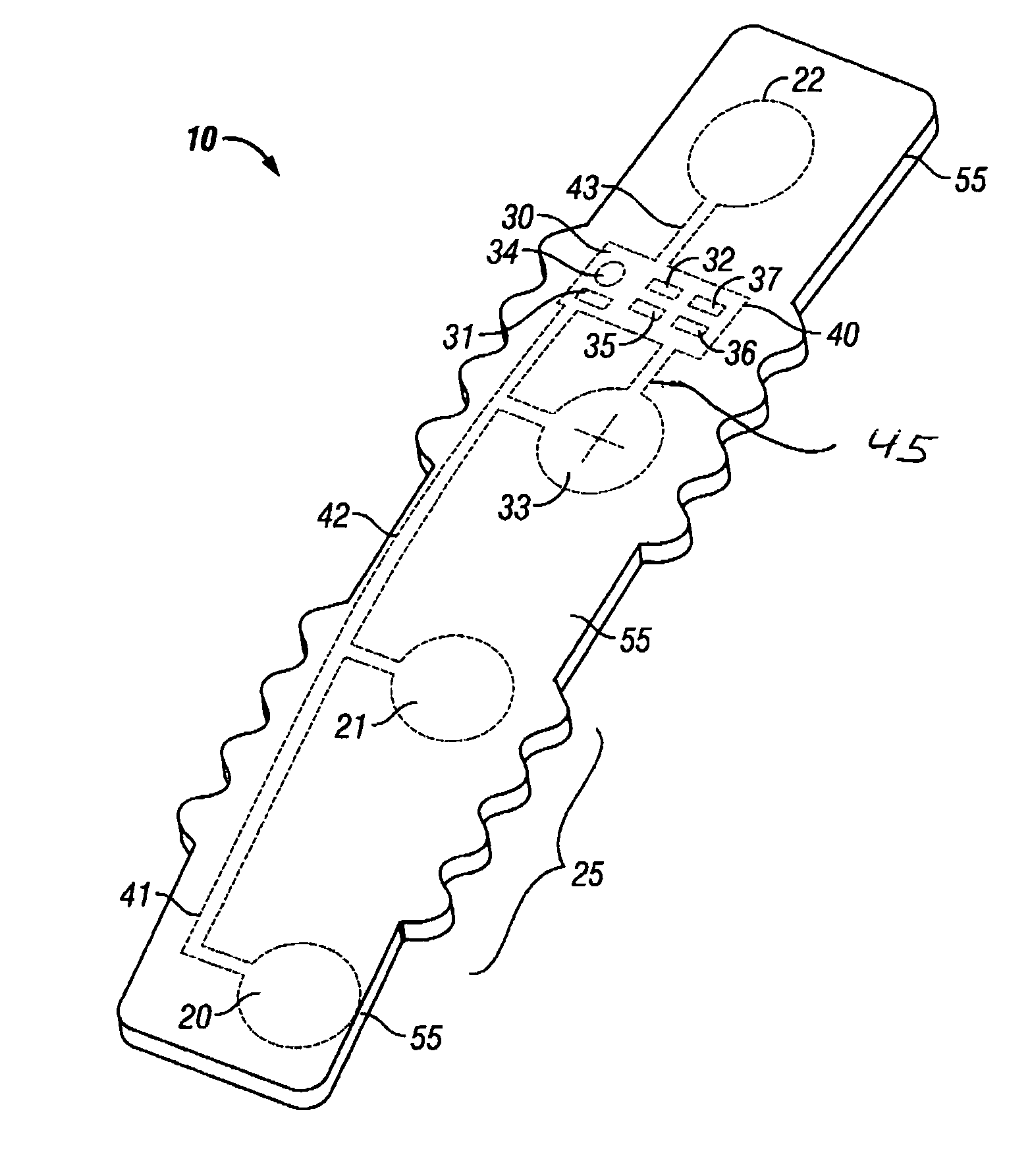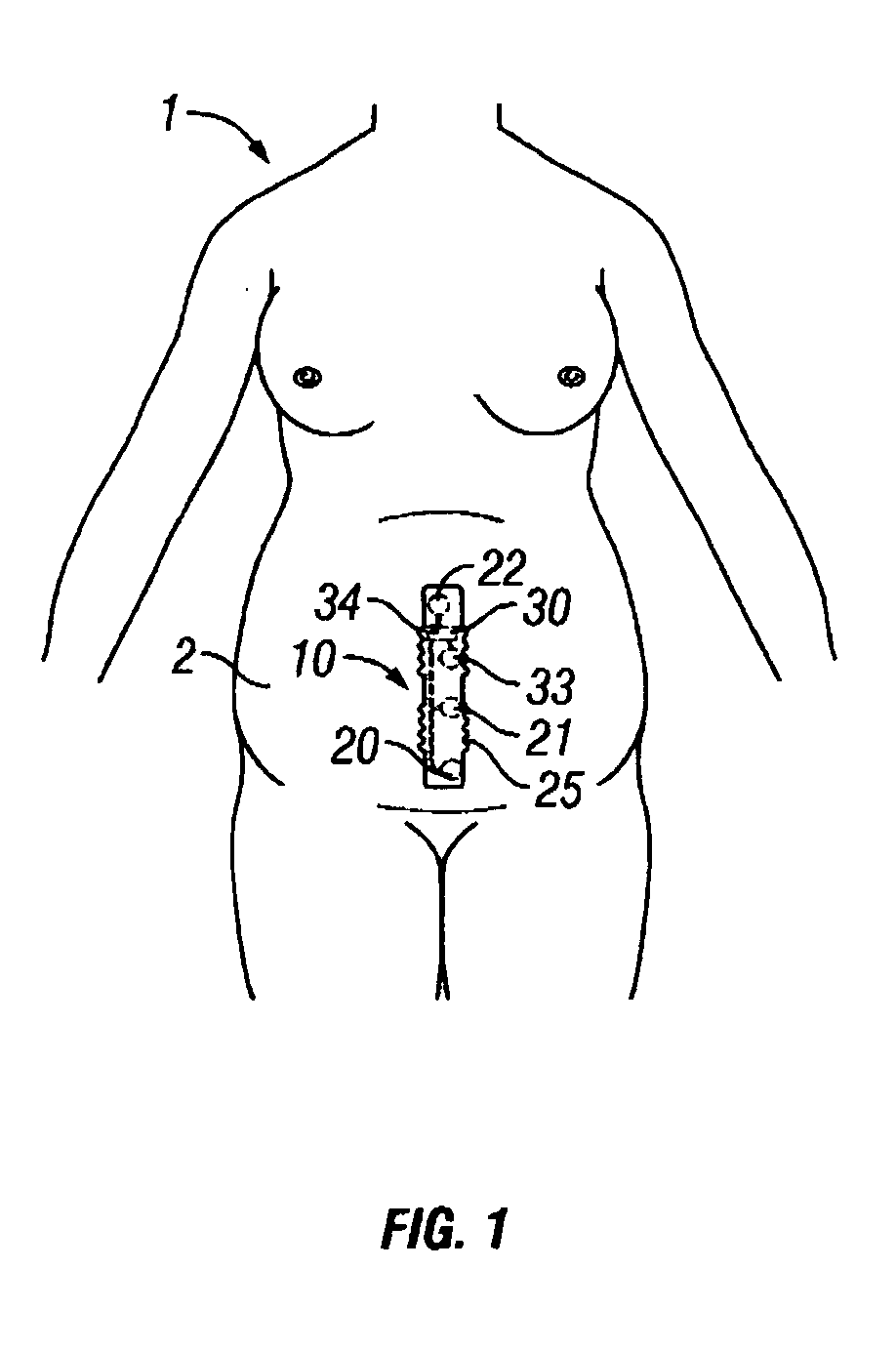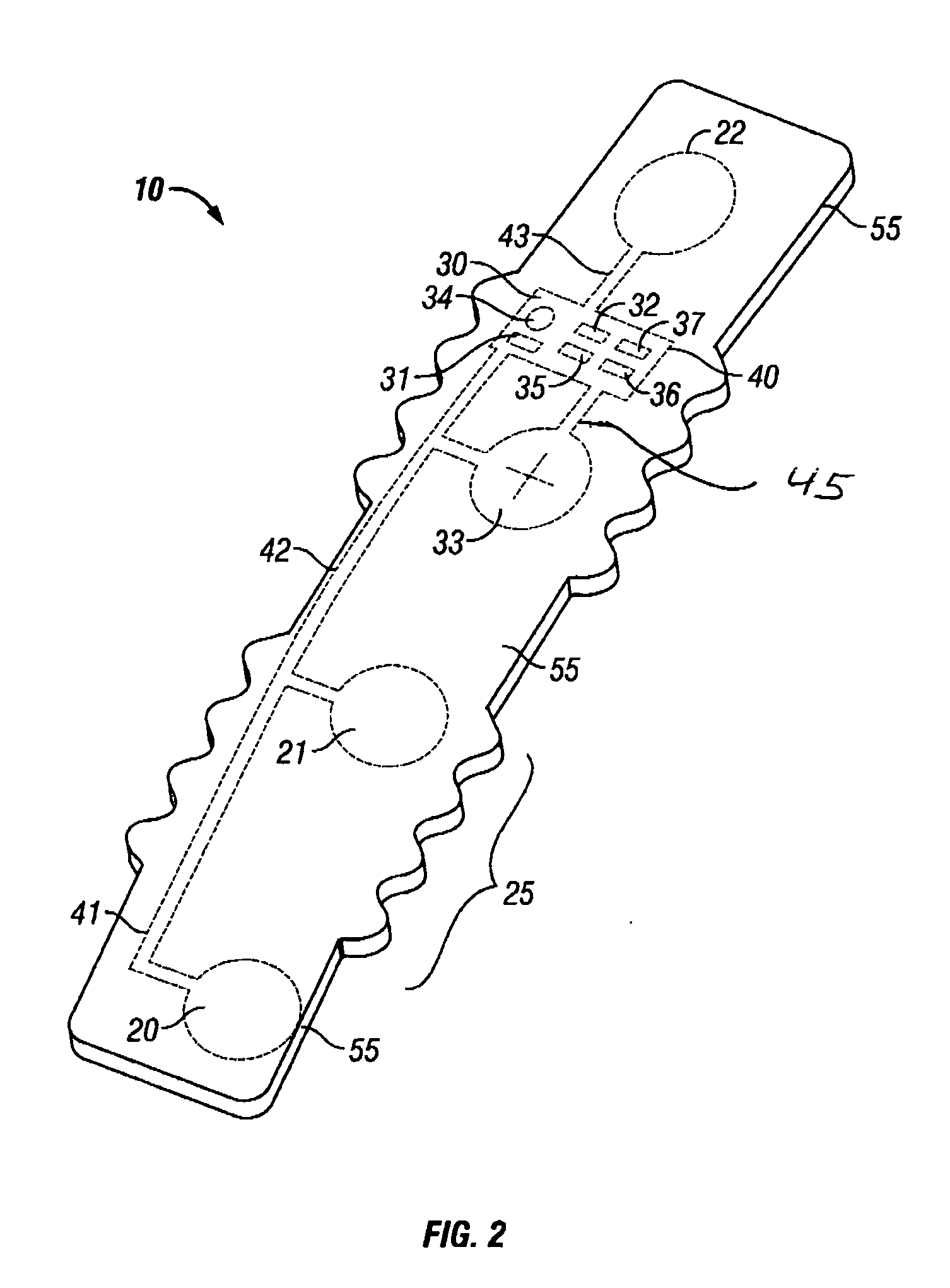Disposable labor detection patch
a patch and detection technology, applied in the field of non-invasive monitoring of pregnant women, can solve the problems of demise of newly born babies, too weak and too sick to go home, and increase the risk of impaired development of survivors
- Summary
- Abstract
- Description
- Claims
- Application Information
AI Technical Summary
Benefits of technology
Problems solved by technology
Method used
Image
Examples
Embodiment Construction
[0045] The invention, shown in various embodiments of FIGS. 1-13 is a non-invasive contraction monitor 10 in the form of a patch placed on the abdomen area 2 of an expectant mother 1. The electronic patch device 10 is thin and flexible for unobtrusive, continuous wear.
[0046] Referring to the embodiment of FIGS. 1-3, the patch device 10 comprises EMG electrodes, 20, 21, and 22. The device 10 also comprises an electronic assembly 30 including a biopotential amplifier 31, a processor 32, and a power source 33. The processor 32 is typically a digital signal processor for performing numerical computation from data obtained from an analog-to-digital converter 36. The power source 33 in the preferred embodiments is a primary battery having long shelf life.
[0047] In a more detailed view of the device shown in FIGS. 2-5, the electronic assembly 30 is mounted on a flexible circuit substrate 40 with trace extensions 41, 42, 43, and 45 connecting the electronic assembly 30 to electrodes 20, 2...
PUM
 Login to View More
Login to View More Abstract
Description
Claims
Application Information
 Login to View More
Login to View More - R&D
- Intellectual Property
- Life Sciences
- Materials
- Tech Scout
- Unparalleled Data Quality
- Higher Quality Content
- 60% Fewer Hallucinations
Browse by: Latest US Patents, China's latest patents, Technical Efficacy Thesaurus, Application Domain, Technology Topic, Popular Technical Reports.
© 2025 PatSnap. All rights reserved.Legal|Privacy policy|Modern Slavery Act Transparency Statement|Sitemap|About US| Contact US: help@patsnap.com



